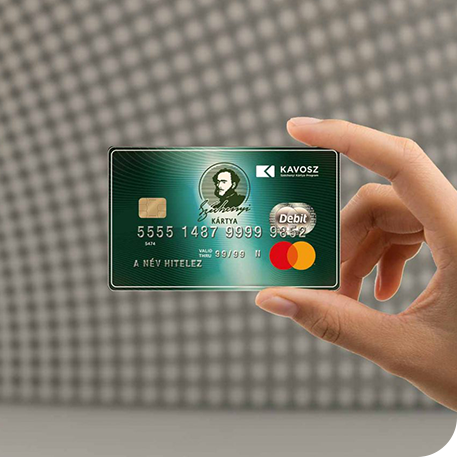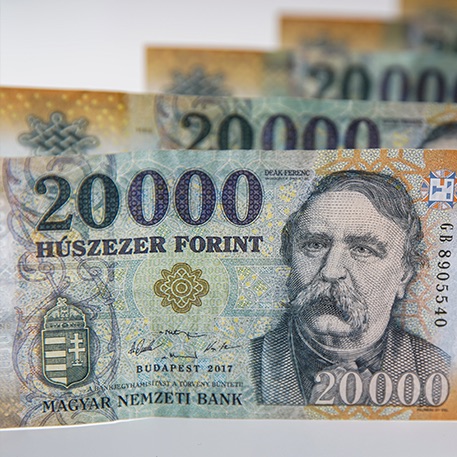Main references
Digitizing the population registry database in Vietnam

The Hungarian consortium, led by Pont Systems, won the population registry digitization project in Hai Phong, a port city of 2 million in North Vietnam, which is also the third most populated city in Vietnam. The consortium led by Pont Systems Ltd. is committed to modernize the currently paper-based population registry system, and to deliver a technically and technologically up-to-date, competitive solution to the client.
The EUR 10 M pilot project is carried out with Hungarian contribution of at least 50%. The system in Hai Phong is going to be integrated into the planned country-wide national population registry database.
The main aim of the project is the design and implementation of such a system which can handle changes, approvals or even central queries regarding personal data and addresses.
 More info
More info
- Building restoration, hardware work, procurement and installation of supplementary equipment, procurement of essential hardware and connected licenses, implementation and installation of software with regard to two data centers (Hanoi and Hai Phong) and more than 750 workstations.
- Improvements at police stations (224 locations): setting up the required infrastructure
- Software development: planning and implementing a population registry software that suits Vietnamese needs
- Data collection and digitisation: collecting and recording Hai Pong population data with the help of specially designed software (200 data recorders)
- Knowledge transfer: end user trainings in Hungary and in Vietnam, operation and maintenance of the system (hardware and software) for three years
ID card in Laos
Our knowledge base, which we could showcase during the development of the population registry system in Vietnam, created the perfect foundation for more such challenges in other countries of the region.
In Laos, with a population of nearly 7 million, the Ministry of Public Security, which also acts as the Ministry of State, is responsible for managing national identity cards,.
Within the realms of a countrywide modernization project, the goal is to replace the hardware, software and public administration processes of identity cards.
The project is funded by the aid credit program, also supported by the European Union. Pont Systems and its two partners are representing the Hungarian consortium.
The project with a planned budget of USD 25 M started in 2016, when we presented our experiences and learnings in connection with the Vietnamese population registry system. Following that, organizing the preliminary meetings and financing requirements took one year. This means that we could launch the approximately 2-year project at the beginning of 2018, including.

 More info
More info
- Analysis
- Planning
- Devising the administrative process
- Software development
- Building the hardware infrastructure
- Building the server room, office equipment and workstations
- Installing the card personalisation machine
- Building mobile offices to record data in countryside locations
- Knowledge transfer for end users
- Operation and maintenance
Instant Card, personal loans for product purchasing

Apart from the traditional personal loans for product purchasing and credit cards, our bank client’s aim is to provide a credit card that customers can start using much quicker. The pre-made instant card can be given to the customer and can be used for making purchases at the moment of signing the contract. Previously, the customer had to wait for the application documents to be received for operation, then after evaluating the claim, the card was sent out by mail, which could result in several days or weeks of processing time.
During this previous process, there was the special challenge of keeping short system response times (performance) while using an old system (and inhomogeneous technology). Moreover, the parties engaging in the sales procedure could only connect to the bank’s system indirectly; therefore, paying attention to avoiding security issues was of utmost importance.
 More info
More info
- One part of the project is designing the card directory system, which helps in tracking the instant cards that are either sent to sales points, sold, expired or are in production. Another part is centrally regulating the number of cards sent to each sales point at a given time while maintaining constant stocks.
- The project and project management were done using the classic waterfall model, as required. Even though the project was planned using this traditional waterfall model, several elements were taken over from the agile methodology as well due to strict deadlines.
Virtual Card
We are working on the virtual card for Budapest Bank on the basis of our agreement with a mobile service provider. The aim of the virtual card is to let the customers of this particular mobile service provider use their NFC-capable mobile devices for mobile payments by using the credit card system of the bank. As opposed to the traditional solution of paying with your phone, this system does not charge the phone bill but the bank overdraft directly.
During product planning, our task in the first phase was to modify the sales platform, i.e. to change the already ongoing processes and to build the connection points to external systems.
The 1.5-year-long project included a project manager, approximately 6-10 developers, and 1-2 testers.

Chamber Registration System

The registration system, devised for the Hungarian Chamber of Commerce and Industry, manages member registration, member registry, and tracks member-related events.
The system handles the data of registered enterprises and of chamber members, and financial information accumulated during various processes.
The Chamber registration system deals with the registration of its 23 economic organisations, the administrative support of registration, and with registration fee payments. There are approximately 1.1 million registered enterprises in this system, operated by Point Systems.
 More info
More info
Technological and technical specifications:
- Tomcat,
- MySQL,
- jQuery,
- jQueryUI,
- AJAX,
- Generating PDF
Széchenyi Card Implementation
This project was responsible for creating the Széchenyi Card System, which can receive and process Széchenyi card credit applications and guarantor application replies coming from KAVOSZ and GHG. It is also capable of compiling reports and messages required by KAVOSZ and GHG, and sending them scheduled as it is required. This project provided comprehensive support for data reporting and interface developments (which were in connection with the launch of Széchenyi Card product(s)) between KAVOSZ, GHG and transactional system(s).
The system is accessible via a web-based platform. Further technical specifications: WebService/JMS/Servlet based interfaces, SFTP based interface with a PROXY in the DMZ, MQ connection with the MQ Gateway in the DMZ.

Business Registry System

The main point of the business registry system, created for Carpathian Region Business Network Ltd., is to guarantee the easy accessibility of registered company data of those companies which are in relation with the organization.
By now, the system is managing data of more than 700 companies from 7 countries, but it has been developed to handle many more than that.
The application has an online platform, and was created using the JAVA programming language. Data is stored in a well-designed MySQL database. For logging logins and queries, we decided to use a document-oriented database, MongoDB.
During development, the unique aspects of each country played a significantly important role. On top of paying attention to linguistic differences, our task was also to take different administrative units into account.
 More info
More info
We used our specially developed list-management module for listing and filtering. This module is capable of defining complex filtering options, sorting listed results based on letters or numbers into descending or ascending order. By combining filter options, it is possible to create further custom filter groups, which can be used to retrieve the whole database. Results can be exported into Excel (xls) or PDF format.
The application is accessible via https protocol, which guarantees secure communication between the server and the browser. In order to provide more security, there are IP address checks as well. Access is permitted only from a particular IP address or IP range. The system is logging failed login attempts. After several failed attempts, the IP address goes onto a blacklist, which it can leave automatically in 24 hours or manually by an administrator.
After successful internal tests, the system becomes available for end users for testing purposes. Training end users to use the system happens at the same time.
Training is supported by a user manual and online documentation. We launch the system after a successful test run.
Central Retrieval Module
The main task of this system is to provide all applicable divisions of our bank client with a central and unified data retrieval system which can increase the retrieval speed of data necessary for business procedures, and can simplify query processes.
The aim of the application is to manage investigation tasks that occur during business procedures on a single platform. This way, queries launched toward the participants of particular transactions can become available for all users who have access rights to this application. So it is unnecessary to repeat the investigation processes of those participants who appear in several transactions; queries can be reused.
As the majority of workflows are in connection with credit processes, the system retrieves client-specific KHR and GIRO data already at the beginning of the process. If the client is a company, then Opten data are retrieved as well.

 More info
More info
- Technologies applied in the application: J2EE6, Hirbernate 4, WebSphere Portal, JBoss, EJB, Webservice, MQ, DB2.
- Java 8 development, JBoss application on server, but it functions in other application environments as well
- Platforms integrated into Websphere Portal
- Data storage in DB2, but Oracle compatible and other data storage options are also possible
- IBM MQ technology was required by BANK architecture
- The task of the Gateway EJB3 module is to guarantee a common data structure toward bank applications, and data transformation onto external interfaces.
- Java EJB3 backend contains business logics - business applications are in touch with this module
Cashflow Inventory Application

It is a serious management task for financial institutions to constantly track treasury stocks and plan necessary actions (topping up stocks, “selling” surplus, etc.).
This cashflow inventory management system is designed to measure and monitor cashflow in bank branches. Users with different rights can upload data into the system, can create statistics and reports of daily cashflow data.
 More info
More info
Technological specifications:
- Glassfish Application Server,
- Oracle DB,
- OpenSSO authentication
Food Distribution Chain - Security System in Laos
The security system of the food distribution chain in Laos is undergoing development in numerous areas. Among these, we can find shipment tracking, with special attention paid to checking and recording live stock and plant-based products crossing the border, as well as to the organised management of checking and approval documents.
It is also of strategic importance to Laos to be able to join the international food trade, which requires a national referential laboratory system to be set up. This solution could greatly enhance and support the professional validation of official procedures, which started in connection with international food distribution. However, first and foremost the ISO 17025 accreditation procedure needs to be launched and received for this solution to work.
The main task of the IT system is to track and document the transfer of product samples taken at various locations to the central laboratories, where they are examined. Another task is to record, statistically process and assess data in connection with the operation and management of the food distribution chain. This data is then organised into a logically uniform, coherent system, following the application of traceability and the option of expansion with further subsystems as ground rules.

 More info
More info
The most important modules:
- Registry module with master data system (food corporations, their profile and their addresses)
- Official supervisory module (checking and sampling)
- Laboratory management module
- Animal registry module
- Live stock transporting module
- Planning module
- Data analysis module
Major tasks:
- Analysis of the situation
- Building the hardware infrastructure - equipment
- on the server side
- on the client side
- Software development
- Knowledge transfer to end users
- Operation and maintenance
Online Scoring System

The Online Scoring - Credit scoring system, developed by Pont Systems Group, consists of three main parts:
Scoring Engine: This software models the credit applicant based on a statistical model. The applicant is first scored on the basis of credit application questions and a financial statement, then they are classified into separate credit rating groups that are assigned to the different score levels. The following step is calculating the collateral and examining the income with the application of specific rule systems. The software is accessible from anywhere, thus the personal credit counsellor can not only create a calculation and give exact information on current credit products in the bank branch but also on site.
Sales Support system: This system, which is connected to the Scoring Engine, provides a platform and workflow to manage incoming credit applications. The system deals with applications in several phases (interest, actual calculations, and application submission). The Sales Support system has been connected to the commissioning financial institution’s internal application so it can automatically upload the credit applications there. The developed application can significantly enhance the speed of work processes, and by doing so it can also make the work of the organisation more efficient and transparent.
Document generator system: With the help of this system, custom-made and general documents can both be created for the client during different phases in the Sales Support system. All these documents can be modified on the document generator platform, which makes it simple to create standard documents without the need to carry out further developments.
 More info
More info
Applied technologies:
- J2EE 6, Velocity, JPA, EJB 3, SPRING
- Glassfish 3.1.X
- Authentication and authorization: OpenSSO
- Front-end made up of reusable components
- EJB3 és JPA type persistence management
- JAVA clustering support, running on several servers, failover support
Issue Management System
This is a multilingual system, which facilitates the registry and checking of legal and supervisory adequacy, and that of operating and economic risks in the financial sector and in a corporate environment. It also facilitates the management of cyclical reports and workflow. It basically manages a three-level structure: at the top level we have the overall Sources (which can be an overall supervisory report, for example), under that the Statements and its Actions. The system is capable of managing Sources, Statement and Action hosts, liable persons, those required to report, and those eligible for checking. It can also deal with the whole workflow, and provides delegation possibilities as well. Moreover, it can handle cyclical and non-cyclical issue processes with strict rights and visibility rules (parameterized by issue type), and with flexible administrative functions. The system is also perfect for implementing the legally recommended calculations of risk values and financial calculations that belong to individual risks.

 More info
More info
The application works on JAVA, GlassFish basis with an Oracle database, and it can be operated through a modern graphical web-based interface, so it does not need the installation of a client. Authentication and authorization can be central (e.g. SSO, AD based) but application-based as well. With the installation of a linguistic dictionary file, an endless number of language interfaces can be accessible.
Investigation Process Support in Financial Institutions

The concept, developed by Pont Systems Group, provides effective support for the investigative tasks of banking procedures, in other words, support for monitoring and crediting procedures. During investigation, there is special attention paid to fraud prevention, credit history checks, and calculation of current outstandings; apart from collecting data in order to assess potential risks.
After registering client data once, all necessary queries can be selected and launched. The results then appear in a structured format, after which individual evaluations can be created. A summary information sheet is also generated for the entity based on the investigation results.
Thanks to the modular development of the application, services provided by it can also be offered to already existing other systems. Beyond that, it is also capable of acting as an intermediary by accepting data necessary for retrievals, and transferring such accepted information and results.
The application has a separate module for managing and maintaining the custom lists used by Risk Assessment divisions. It also offers a solution for defining the search algorithm, which can be parameterized based on these custom lists and the data set within them.
 More info
More info
The application entails a centralized query platform to access internal data sources and the following external data providers, registered by the financial institution:
- Opten - Company information, bankruptcy data; Balance information; Connection network; EOKR, public debt records
- KHR - Retail credit history, Corporate credit history
- Girinfo - Personal, corporate and asset basic information
- Takarnet - Land Registry Information
SME Credit Procedure Support System
This is a complex, multi-layered, distributed workflow management system, which covers the credit procedures of the whole SME sector (small-, middle- and micro-sized enterprises).
Logical elements of the system:
Java application: J2EE application, which provides the user platform, contains part of the business logic that excludes process control, and stays in touch with other elements of the system. It can be installed independently on a separate application server or it can also be run in a clustered environment.
Document Generator Module: J2EE application, which lets documents be created in a service-oriented approach. Required business data is delivered to the application within queries, based on which a document template is selected. The application puts the data in the selected template and generates the document. For creating the documents, we use OpenOffice.

 More info
More info
Technologies applied:
- J2EE 6, Velocity, JPA, EJB 3, SPRING
- WebLogic
- Authentication and authorization: Open SSO
- Front-end made up of reusable components
- EJB3 and JPA type persistence management
- JAVA clustering support, running on several servers, failover support
- Web Services between WF Engine and Java app
- SAP BO business intelligence module
Automatization of Credit Rating Systems

The aim is to automatize the credit rating system of one large national bank that is used in its corporate sector with the help of Workflow technology. The system creates a client platform, which lets process management be connected to clients and not transactions. The application, which supports credit authorisation for small and middle-sized enterprises, can provide an overarching solution from the application to the final decision.
 More info
More info
Processes:
- Transaction decision
- Conclusion of contract
- Disbursement
- Regulations
- Renewal
- Modification
- Valuation
- To Do-s
- Administration
- Reports
- Monitoring
- Transaction modification
The Credit Scoring System of Unsecured retail Credit Services
Multi-element, separate architecture (JAVA, Delphi, PHP, Oracle).
It was designed for numerous industries: sales, product management, risk assessment, pricing, compliance, etc.
Apart from the branch network, there is a retail terminal at partners.
On top of credit cards, personal loans, personal loans for product purchasing, and overdraft loans, there are virtual and instant card solutions.

Retail Mortgage Support Application

This is a workflow application which covers the complete retail mortgage procedure.
Its modules:
- Sales support module
- Credit scoring module
- Contract conclusion module
- Disbursement module
- Creating required data reports
- Follow-up
Document Management Application
An electronic document management system which controls, in a structured fashion, all requested and produced documents relating to client, client group or transaction.
- Participation in IBM Content Manager upgrade and optimization
- Bulk file upload module: Thanks to this application module, developed using Java applet technology, all selected documents can be uploaded in one go.
- Mailing and archiving support
